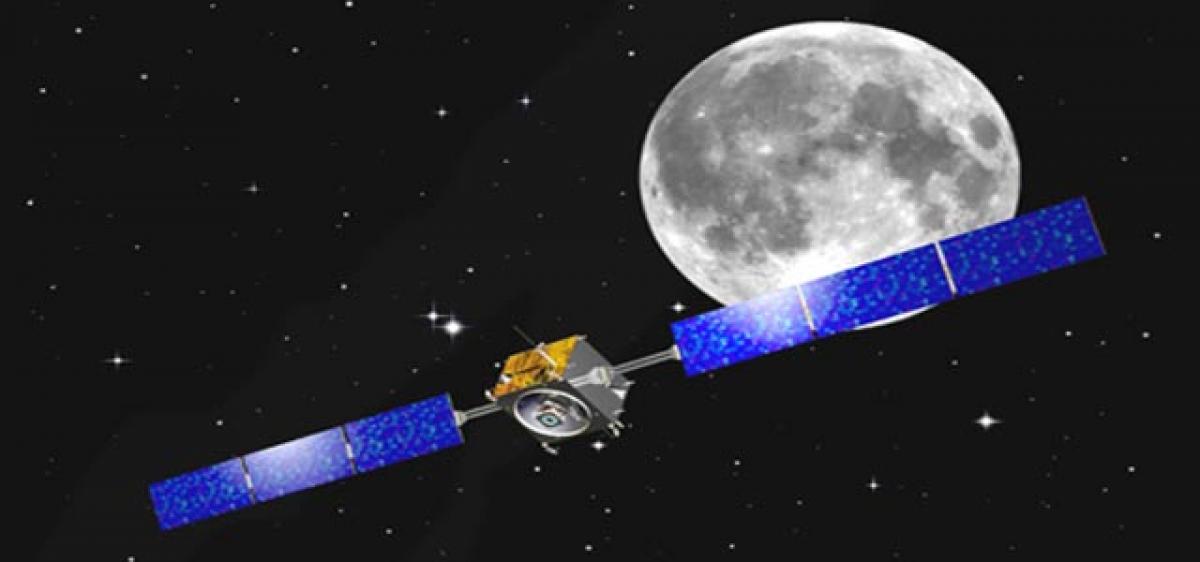Live
- North Andhra will be developed on all fronts
- HMWSSB MD reviews water supply
- Blunders of Nehruvian era still haunting the country: Dr Jaishankar
- Congress leaders consider themselves above Lord Ram: PM
- Extreme weather may pose risk to inflation: RBI
- TDP candidate assures to provide concession on power tariff
- BS Maqbool Urges Voters to Support Good Governance in Election Campaign
- Chief Minister makes YSRCP’s stance clear on Vizag Steel Plant
- YSRCP Candidate files Nomination for Eluru Parliament constituency
- TDP MLA Candidate Accuses YCP of Inciting Religious Fanaticism in Kadiri District
Just In

India\'s first unmanned mission to the moon- Chandrayaan 1- which was believed lost, is still orbiting the moon, say NASA scientists.
India's first unmanned mission to the moon- Chandrayaan 1- which was believed lost, is still orbiting the moon, say NASA scientists. In April 2003 over 100 eminent Indian scientists in the fields of planetary and space sciences, Earth sciences, physics, chemistry, astronomy, astrophysics and engineering and communication sciences discussed and approved the Task Force recommendation to launch an Indian probe to the Moon. Six months later, in November, the Indian government gave the nod for the mission.
Chandrayaan-1, India's first lunar probe, was launched by Indian Space Research Organisation on PSLV-XL rocket, serial number C11, on 22 October 2008 from Satish Dhawan Space Centre, Sriharikota, Nellore District, Andhra Pradesh. The vehicle was successfully inserted into lunar orbit on 8 November 2008.
On 14 November 2008, the Moon Impact Probe separated from the Chandrayaan orbiter at 20:06 and struck the south pole in a controlled manner, making India the fourth country to place its flag on the Moon. The probe hit near the crater Shackleton at 20:31, ejecting sub-surface soil that could be analysed for the presence of lunar water ice.
The estimated cost for the project was $57 million. The satellite had a mass of 1,380 kg (3,040 lb) at launch and 675 kg (1,488 lb) in lunar orbit. It carried high resolution remote sensing equipment for visible, near infrared, and soft and hard X-ray frequencies. Over a two-year period, it was intended to survey the lunar surface to produce a complete map of its chemical characteristics and three-dimensional topography.
Chandrayan-1 reported evidence of large quantities of water on the moon's surface in 2009. The satellite made more than 3400 orbits around the moon. After almost a year, the orbiter started suffering from several technical issues including failure of the star sensors and poor thermal shielding, Chandrayaan stopped sending radio signals at 01:30 IST on 29 August 2009 shortly after which, the ISRO officially declared the mission over.
Chandrayaan-2 is India's second lunar exploration mission after Chandrayaan-1. Developed by the ISRO, the mission is planned to be launched to the Moon by a Geosynchronous Satellite Launch Vehicle (GSLV Mk II). It includes a lunar orbiter, lander and rover, all developed by India. ISRO is planning to launch Chandrayaan-2 in the first quarter of 2018.

© 2024 Hyderabad Media House Limited/The Hans India. All rights reserved. Powered by hocalwire.com







